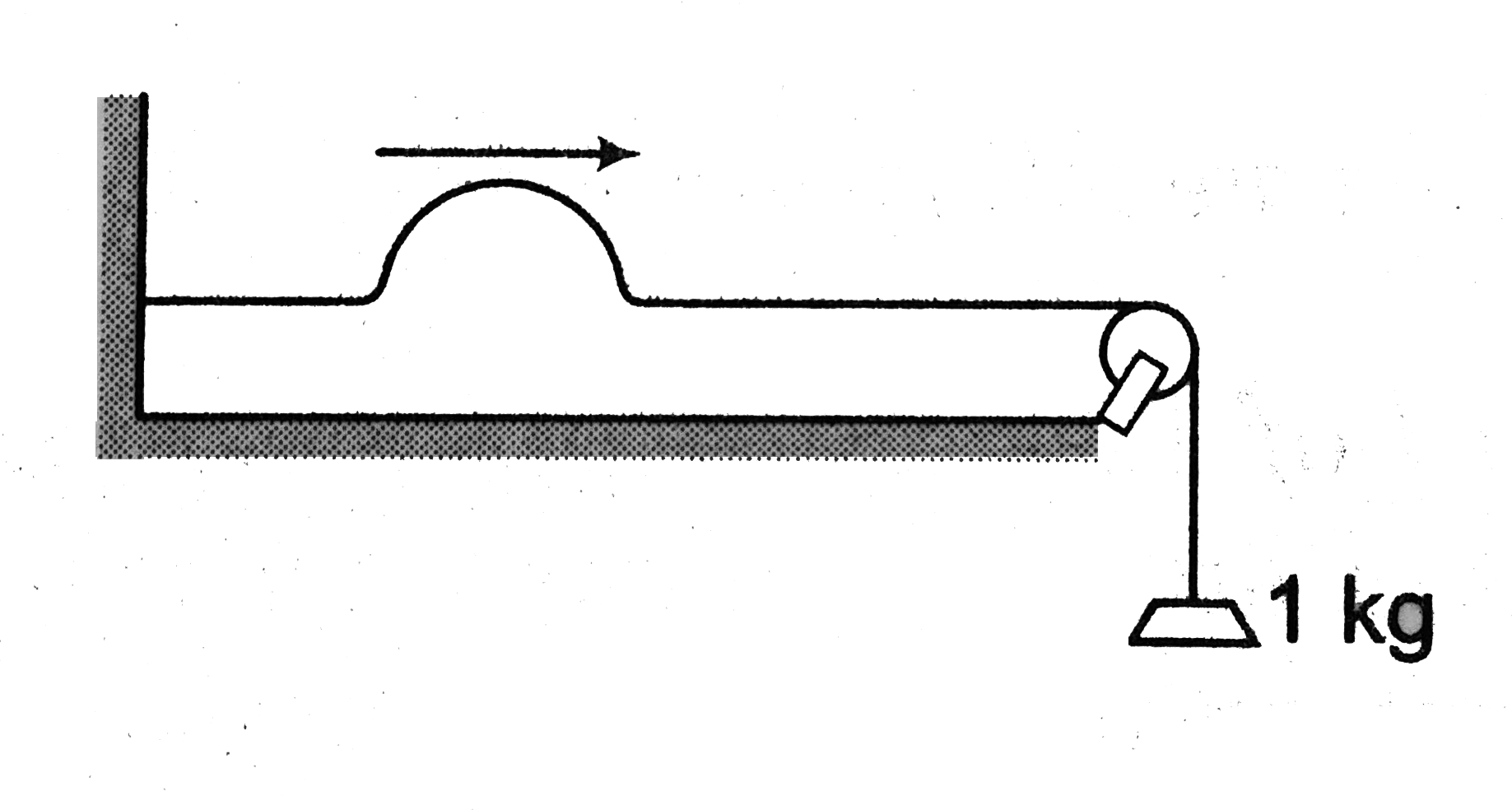A 4.0 kg block is suspended from the ceiling of an elevator through a string having a linear mass desity of 19.2×10−3kgm−1. Find the speed (with respect to the string) with which a wave pulse can proceed on the string if the elavator accelerates up at the rate of 2.0ms−2.Takeg=10ms−2.
v=√Tμ=√M(g+a)μ
Substituting the data we get V=50ms−1.
Topper's Solved these Questions
- WAVESBOOK - AAKASH SERIESCHAPTER - WAVESEXERCISE - EXERCISE-IA (Theoretical questions :)
85 Videos
- WAVESBOOK - AAKASH SERIESCHAPTER - WAVESEXERCISE - EXERCISE-IA (Statement type questions:)
18 Videos
- WAVE OPTICSBOOK - AAKASH SERIESCHAPTER - WAVE OPTICSEXERCISE - PROBLEMS (LEVEL - II)
33 Videos
- WAVES OPTICSBOOK - AAKASH SERIESCHAPTER - WAVES OPTICSEXERCISE - EXERCISE -III (POLARISITION)
10 Videos
Similar Questions
A heavy ball is suspended from the ceiling of a motor car through a light string. A transverse pulse travels at a speed of 60cms−1 on the string when the car is at rest and 62cms−1 when the car accelerates on a horizontal road. Find the acceleration of the car. Take g=10ms−2
View SolutionA transverse wave described by
y=(0.02m)sin[(1.0m−1)x+(30s−1)t]
propagates on a stretched string having a linear mass density of 1.2×10−4kgm−1. Find the tension in the string.
View SolutionA piano string having a mass per unit length equal to 5.00×103kg/m is under a tension of 1350N, Find the speed with which a wave travels on this string.
View SolutionA block of mass 0.2 kg is suspended from the ceiling by a light string. A second block of mass 0.3 kg is suspended from the first block through another string. Find the tensions in the two strings. Take g=10ms2.
View SolutionFigure showa a string of linear mass density 1.0gcm−1onwhichawaveps–eistravell∈g.F∈dthetimetakenbytheps–e∈travell∈gthroughadistanceof50cmonthestr∈g.Takeg=10 ms^-2.

View SolutionA heavy ball of mass M is suspended from the ceiling of a car by a light string of mass m where m less than M. When the car is at rest, the speed of transverse waves in the string is 60,ms−1.When the car has acceleration a, the wave speed increases to 60.5ms−1.The value of a, in terms of gravitational acceleration g, is closest to :
View SolutionA heavy ball is mass M is suspended from the ceiling of a car by a light string of mass m(m<<M). When the car is at rest, the speed of transverse waves in the string is 60ms−1. When the car has acceleration a, the wave-speed increases to 60.5ms−1. The value of a, in terms of gravitational acceleration g, is closest to:
View SolutionA heavy ball is mass M is suspended from the ceiling of a car by a light string of mass m(m<<M). When the car is at rest, the speed of transverse waves in the string is 60ms−1. When the car has acceleration a, the wave-speed increases to 60.5ms−1. The value of a, in terms of gravitational acceleration g, is closest to:
View SolutionFigure shows a string of linear mass density 1.0gcm−1 on which a wave pulse is travelling. Find the time taken by pulse in travelling through a distance of 50cm on the string. Take g=10ms−2

View SolutionTwo long strings A and B, each having linear mass density 1.2×10−2kgm−1, are stretched by different tensions 4.8 N and 7.5 N respectively and are kept parallel to each other with their left ends at x = 0. Wave pulses are produced on the strings at the left ends at t = 0 on string A and at t = 20 ms on string B. When and where will the pulse on B overtake that on A ?
View Solution
